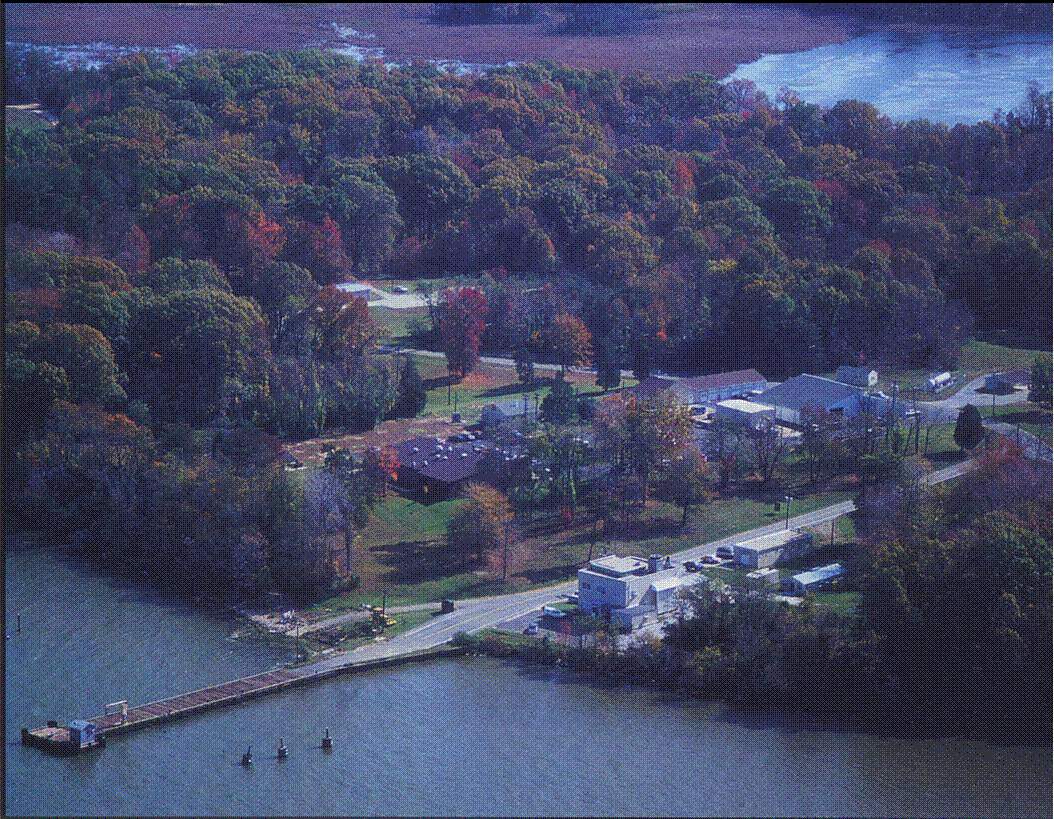|
|
|
|
LOCATION NAVAL EOD TECHNOLOGY DIVISION The NAVEODTECHDIV is located in Indian Head, Maryland on the Potomac River about 30 mile south of the beltway encompassing Washington, DC. There are eagles nesting on base, many deer and wild birds, and enough fish in the nearby creeks to hold national bass fishing events. |
 |
|
HISTORY OF NAVEODTECHDIV In 1942 it was named the Explosives Investigation Laboratory (EIL) under the Navy Bureau of Ordnance (BUORD). EIL was ordered by BUORD to perform inerting procedures on recovered enemy ordnance including bombs, mines and torpedoes. After inerting was accomplished, the enemy ordnance was documented and the information and hardware was used primarily by the Bomb and Mine Disposal Schools in the instruction of their students. Some of EIL's early work included development and testing of shaped explosive charges for use in cutting bomb and mine cases. EIL was redesignated as the Ordnance Investigation Laboratory (OIL) in 1944 and applied X-Ray techniques using the one million volt Vandergraf X-Ray machine, to analyze captured enemy ordnance prior to the stripping and steaming out of its explosive charge. From 1942 to 1945, OIL at Stump Neck had stripped and inerted over seven thousand pieces of ordnance from all countries involved in Word War 11 including the infamous German V-1 "buzz bomb" and the Japanese "Baka" bomb. In 1951, the Navy was assigned Joint-Service EOD responsibilities for basic training and research and development. Two years later, the research and development tasks were established as a separate organization, redesignated as the Naval Explosive Ordnance Disposal Technical Center and located at Stump Neck. The training function became the Naval Explosive Ordnance Disposal School located at the Naval Powder Factory, Indian Head. After the Center's inception, the Navy tasked the Center with significant additional mission responsibilities and in 1955 the Center's technical staff was expanded to include civilian engineers and technicians. In 1962 the Center was redesignated as the Naval Explosive Ordnance Disposal Facility (NAVEODFAC). NAVEODFAC's continued military and technical contributions to the Joint-Service EOD program were further recognized in 1971 when the Facility was designated as an Echelon 4 activity under the Naval Ordnance Systems Command, NAVEODFAC was tasked to provide EOD research and development support in carrying out the Secretary of the Navy's responsibility for meeting Joint-Service EOD technology requirements. In late 1980, NAVEODFAC was redesignated as the Naval Explosive Ordnance Disposal Technology Center (NAVEODTECHCEN). In 1993 the Navy established the Naval Ordnance Center and the NAVEODTECHCEN was redesignated as the Naval Explosive Ordnance Disposal Technology Division (NAVEODTECHDIV) of the Center. Today we are NAVEODTECHDIV of Naval Sea Systems Command (NAVSEA).
|
WORTHWHILE LINKS:
http://www.navsea.navy.mil/flash.html